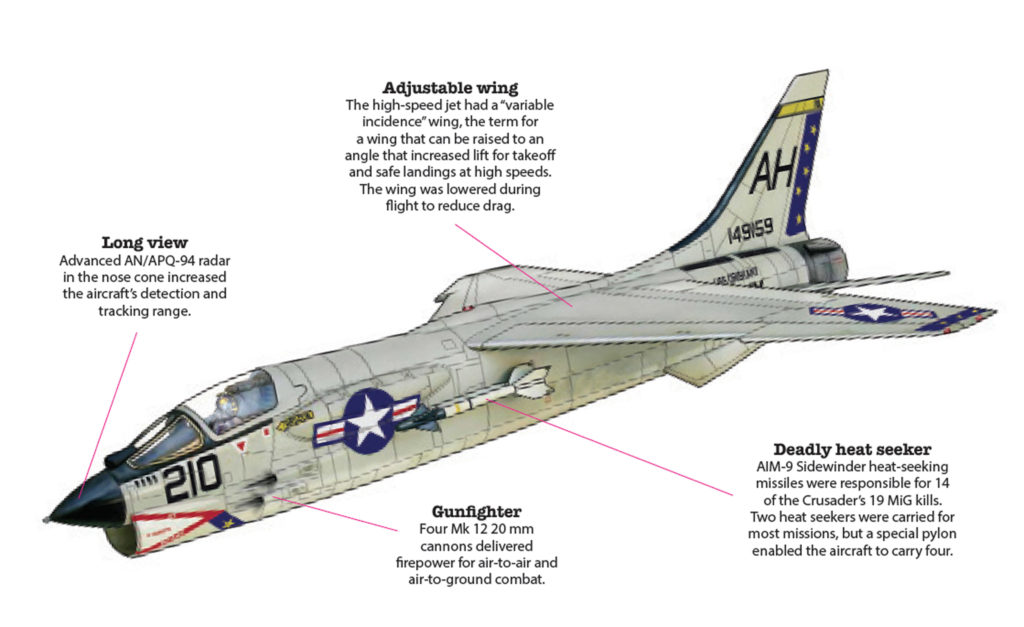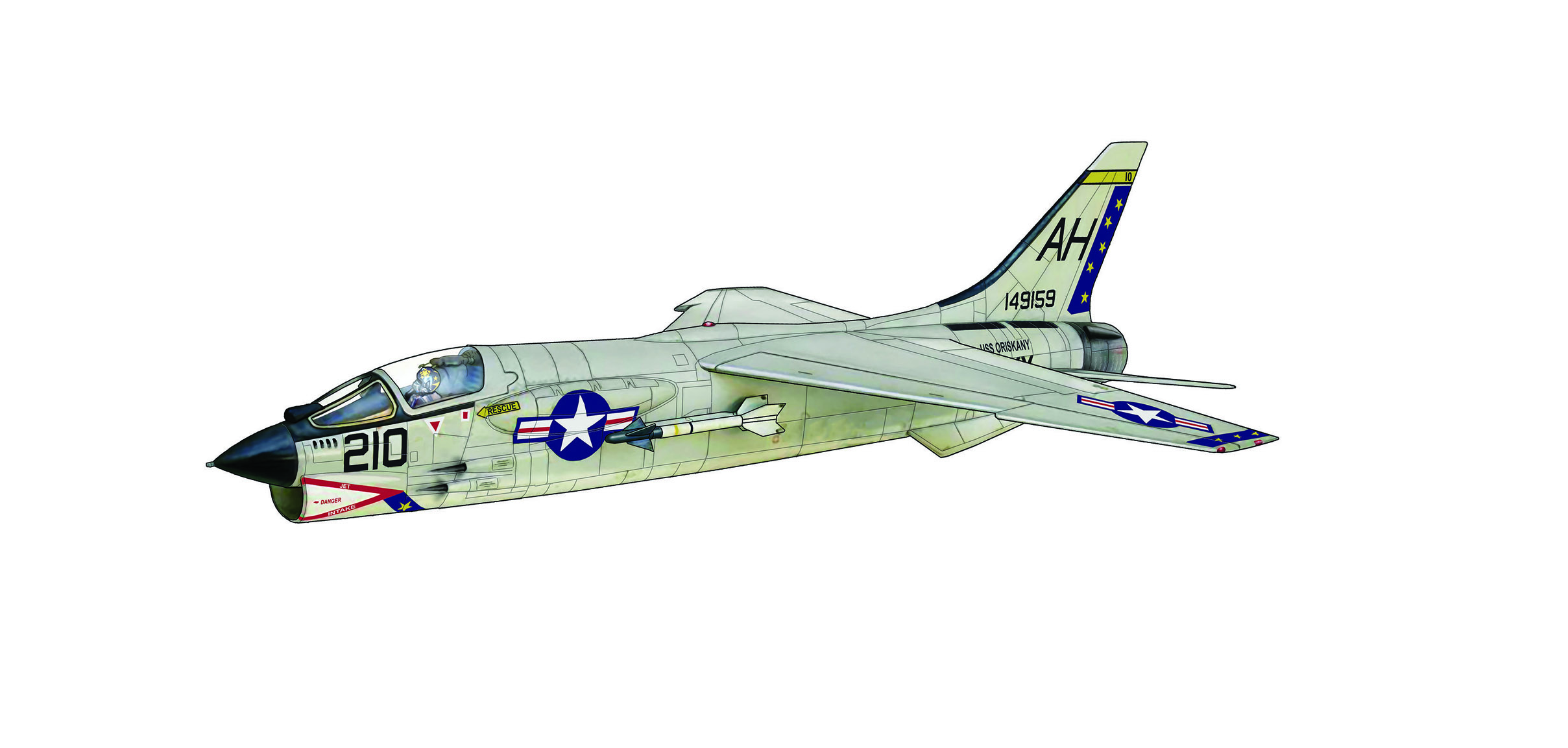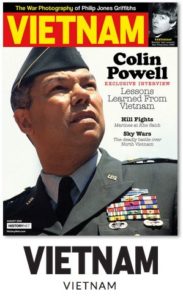Shortly after 10 a.m. April 3, 1965, Pham Ngoc Lan brought his MiG-17 to fire on Navy Lt. Cmdr. Spence Thomas’ Vought F-8E Crusader as the American jet pulled away from attacking an anti-aircraft artillery position. Approaching undetected, Pham opened fire at a range of 200-300 yards. As the shells hit, Thomas lit his afterburner and climbed away. Pham’s wingman and two other nearby MiGs tried unsuccessfully to down three additional Crusaders. Thomas landed his severely damaged fighter at Da Nang in northern South Vietnam. Although the North Vietnamese won this first F-8 vs. MiG engagement, Crusaders by the end of the war had earned the title “MiG Masters,” achieving a 19-3 kill ratio over opponents.
The F-8, which entered production in 1955, was the Navy’s first fighter to use the “area rule” fuselage shape (a design feature that gave the fuselage a slightly narrowed waist to reduce drag) and lightweight titanium. The aircraft’s innovative overhead wing provided the high angle required for carrier landings and takeoff speeds of 100 knots (115 mph) while keeping the fuselage level. This enabled the plane to use weight-saving short landing gear and offered outstanding ground visibility. The Crusader’s lightweight and powerful Pratt & Whitney J-57P afterburning engine gave it exceptional acceleration and climb rates that pilots exploited in training and combat over North Vietnam.

Engine: One Pratt & Whitney J-57-P-20A turbojet with 18,000 lbs. of thrust
Wingspan: 35 ft., 2 in.
Length: 54 ft., 6 in.
Takeoff weight: 34,000 lbs.
Max. speed: Mach 1.86
Combat radius: 450 miles
Altitude (service ceiling): 58,000 ft.
Armament: Four Mk 12 cannons with 126 rounds per gun; four AIM-9 sidewinder missiles or 12 250 lbs. bombs or two Bullpup air-to-surface missiles
The Crusader, equipped with four internally mounted 20 mm Mk 12 cannons, was the last U.S. fighter plane with guns as its primary armament. It also carried 24 2.75-inch rockets in a nose pod for ground-attack missions. The F-8 progressed to the “E” model by 1962. That model featured greater engine thrust, wing pylons for 2,000-pound bombs and improved radar, but it lacked the rocket pod. F-8Bs and later models carried up to four AIM-9 Sidewinder infrared-guided missiles. The F-8E was the last and most successful model. Several earlier versions were refurbished and deployed. Few, however, achieved the performance or enviable reputation of the F-8E. The last F-8s departed fleet service in the 1970s and were retired by 1980. V
This article was featured in the Arsenal section of the August 2020 issue of Vietnam magazine. For more stories from Vietnam magazine, subscribe here:






